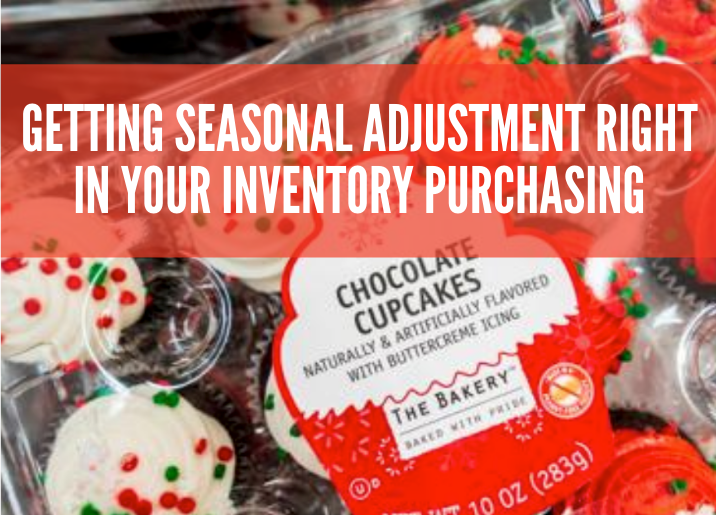 Seasonal profile adjustment is a vital, yet often overlooked part of forecasting seasonal demand. Are your organization’s forecasting models keeping up? For most companies competing in today’s chaotic supply chain, it’s prime time to look into machine learning tools.
Seasonal profile adjustment is a vital, yet often overlooked part of forecasting seasonal demand. Are your organization’s forecasting models keeping up? For most companies competing in today’s chaotic supply chain, it’s prime time to look into machine learning tools.
Seasonal Supply Chain Management
From November 1 to December 31, 2018, the retail industry saw the best holiday season yet, with seasonal retail sales exceeding $850 billion. The huge numbers retailers put up during the winter (and other times of the year) are no secret, so it should come as no surprise that supply chain managers need to plan for this spike.
And. Then. There’s. 2020. [queue the dark music]…
Makes past years look like a cakewalk, right?
While supply chain management with seasonal demand was (mostly) predictable before, this year is a whole different animal.
To manage inventory effectively, you first need to marry the optimal forecasting and replenishment optimization strategy with each SKU, which requires a more advanced seasonal demand forecasting approach.
Leveraging machine learning techniques can help identify seasonal items more easily, generate more accurate forecasts and gain an edge on competitors still struggling with elementary demand models.
Forecasting Seasonality: Must-Haves
To master seasonal profile management, keep these 4 key areas in mind:
- Determining which items to adjust. Do you know every SKU that should have a seasonal profile? The right demand classification techniques can help you understand how sales are likely to fluctuate across a wide variety of demand behaviors. Using probabilistic forecasting and advanced supply chain analytics, you can create an accurate seasonal forecasting model for each item – even the most challenging ones.
- Finding the right model. Many businesses rely on a classic exponential smoothing model to predict demand, which smooths sales activity throughout the year into a holistic forecast. But what happens if an item doesn’t have any sales for 5 or 6 months out of the year – like what happened when the big, bad “C” word hit in February/March. Rather than smoothing periods of no sales into the forecast, which doesn’t produce the most accurate results, use advanced forecasting techniques for SKUs with intermittent demand. For example, aggregating sales to a higher level, such as Category or Location, can help provide a more precise forecast.
- Measuring accuracy. How confident are you that your seasonal forecasts are actually correct? Machine learning-enabled tools can help businesses remove the guesswork from seasonal adjustment. Using pattern-matching algorithms, these tools help ensure that seasonal adjustments will actually improve accuracy before making the change.
- Automating forecasts. The average retailer has thousands of SKUs, which makes it all but impossible to manually create forecasts for each seasonal product. Beyond improving accuracy, inventory forecasting tools can deliver big efficiency improvements by producing product-level forecasts, with no need for user intervention.
Improving Forecast Accuracy
As supply chain management technology continues to evolve, emerging techniques like unsupervised machine learning can help you improve accuracy further. Using near human-level intelligence, these tools can automatically identify trends like seasonal pattern clustering, and push daily alerts so you can quickly adapt and adjust inventory levels faster and with a higher degree of accuracy than ever before possible.
Forecasting seasonal demand with machine learning gives you freedom from the safety stock trap, while positioning your business to keep products in stock for customers at a lower cost.
Think you might need to explore advanced seasonal forecasting tools?















